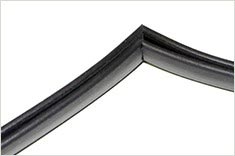EMI Shielding Products
- Custom Gasket Fabrication
- Connector Gaskets
- Bonded O Ring
- Custom Gaskets
- Conduct-O-Knit Knitted Wire Mesh
- Conduct-O-Seal Combo Gasket
- Conduct-O-Elastomer
- Conduct-O-Seal Oriented Wire in Silicone Gasket Material
- Conduct-O-Mesh Tape
- Conduct-O-Foam
- Conduct-O-Bond
- Optical Filters For Electronic Displays
- Shielded Vent Panels
- ESC Board Level Shielding
- 300 Series
Does Your Electronic Device Need RFI or EMI Shielding?
As technology becomes more accessible, powerful, and smaller, a unique problem arises, namely, the interference caused by waves and signals that are produced by the growing number of electronics found and used every day. EMI (electromagnetic interference) and RFI (radio frequency interference) pose a real and serious risk to all electronic devices, regardless of the device or its application. Electronics must be protected from EMI and RFI because without adequate protection, equipment can malfunction and fail altogether. There are cost-effective solutions for electrical engineers, but of all the options, EMI shielding is amongst the most cost-effective and powerful option available.

EMI shielding is designed to protect EMI signals from being omitted from a device or entering a device. When EMI reduction is not possible through circuit design, EMI and RFI shielding enclosures become the best solution.
Both EMI and RFI shields can be applied internally to the electronic enclosure in the form of spray foam. Most commonly, the spray is applied to a plastic enclosure, which reduces the effects of interference. Another type of EMI shield gets brushed on to the exterior of an enclosure to reduce interference. These shielding agents consist of pure elements like copper, silver, and nickel to best reflect electromagnetic radiation.
EMI shielding
All designers and engineers want to prevent their systems from malfunctioning, but some industries must be extra mindful of RFI and EMI shielding. Shielding enclosures play a crucial role in medical equipment. Without shielding on these electronics, systems can potentially malfunction, which will negatively impact the health of patients.
Related Reading:
- EMI Shielding CombosEMI shielding is an essential part of all electronic devices. Without this shielding, electronics would continuously be breaking and working poorly.
- Where Does Electric Magnetic Interference Come From?
- EMI Shielding Management Solutions



